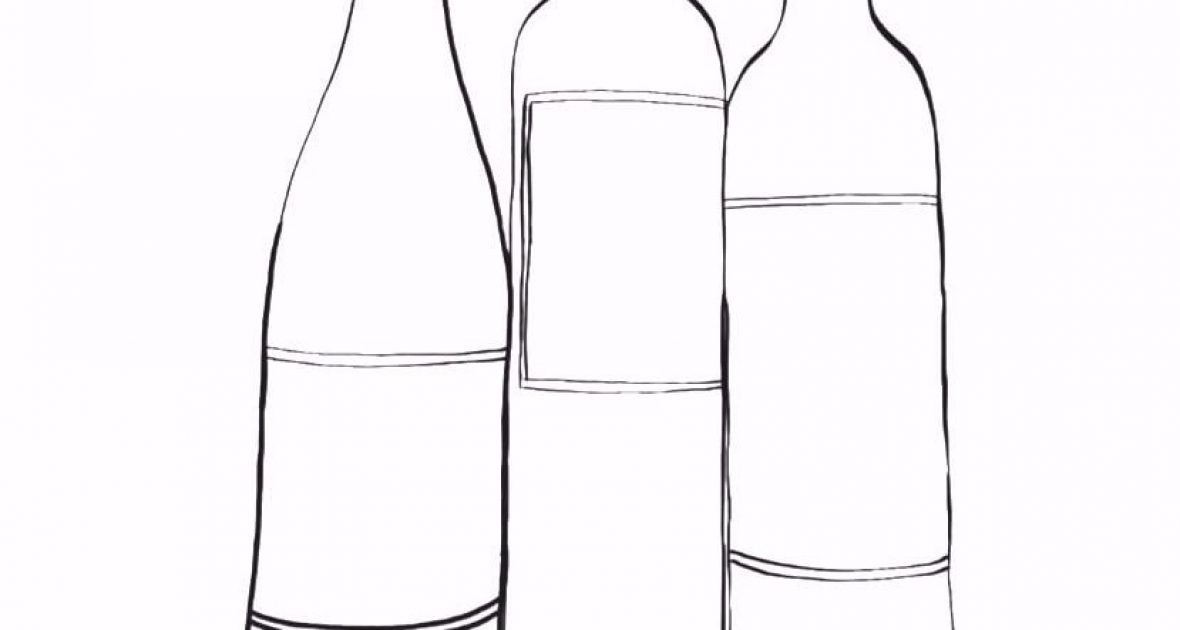By Karina Roe
I’m not the trendiest person in the world. I’m not big on kale. I was years behind the skinny jeans fad. I’ve had the same toaster since my freshman year of college. I don’t watch Rick and Morty. I have no plans to purchase an Instant Pot. But I do know about glou-glou, and if you don’t, it’s time you did.
Glou-glou is a really fun onomatopoeic French term that can be loosely translated to “wine of the moment.” Or, “drink now—right now.” Or, “get out the straws.” Or, “less thinking, more drinking.” Or, “glug-glug.” (It sounds so much better when the French say it.)
Glou-glou is not a new thing. Every winemaker in the world has her or his own version of it. It’s the wine they pull out for a Tuesday night dinner. Glou-glou is what they drink while they’re making their Ultra Special Premium Vintner’s Select Private Reserve Cuvee that they will never drink themselves. It’s the stuff that Italian grandmothers make behind their sheds to be served to guests, and somehow ends up being the most memorable and delicious wine of your entire trip. Glou-glou is not new, but for all its joyous chug-ability, it’s also not boring.
There are no official rules for glou-glou, so everyone’s idea of it will be a little different. Generally speaking though, glou-glou is lighter in alcohol, doesn’t see heavy oak treatment, and is usually fairly high in acidity. It should be able to accompany every part of your meal. It’s supposed to be fresh, gulpable and hedonistically pleasurable, but—and this is important—it should still have character. It should be able to speak of where it comes from, whether it’s from mineral-rich granite soils in Beaujolais; the rustic, herb-laden vineyards of Minervois; centenarian vineyards in Lodi; or an amalgam of limestone soils in Wurttemberg.
I have a great cellar full of cool wines that I’m trying to forget about for the next 10-20 years. When I do open those bottles, it will be in a very particular environment in which I can devote my full attention to the smells, tastes, and intricacies of the wine. In these instances, the wine is the center of everything.
But these times don’t happen that often—nor do I want them to, if I’m honest. Usually what I crave is for good, meaningful conversations with good, meaningful people to be at the center, with thoughtful food and wine on the periphery to act as dynamic catalysts to fuel the conversation. I don’t want my wine to take away from the focus of the gathering (either in an awful sense or a too-good sense); I want it to be impressive without being intrusive, like it’s simply just meant to be there. This is the pleasure of glou-glou for me. I can taste its quality and singularity, but it’s not going to get mad at me if I drink half the bottle without noticing. At the very heart of its nature, glou-glou is meant to bring people together.
I’m excited to bring a few bottles of glou-glou to my holiday gatherings this year. It’s fun and trendy and delicious, but more than that, it’s versatile and forgiving. It will mold itself into whatever role you need it to play: a wine for novices and nerds, for cheese boards and Christmas roasts, for quiet evenings and raucous celebrations, for intimate conversations and rowdy games of charades (do people play charades anymore?). Glou-glou is the wine of any—and every—moment.
Here are a few favorites to get you started:
Taillander Laguzelle • Minervois, France • An offering from cool-kid importer Zev Rovine, this organic red blend from southern France is made from Cinsault, Carignan and Syrah. It’s got the perfect weight–not too light, not too heavy–for easy-drinking on its own or with almost food.
Brand Riesling • Pfalz, Germany • Two brothers from Germany’s very large Pfalz region bring you an entire liter of crisp, lively, bone-dry Riesling. Pair it with anything from a cheese plate (from the fine cheesemongers at France 44, of course) to spicy kung-pao chicken from your favorite Thai take-out joint.
Maitia Aupa Pipeño • Maule Valley, Chile • The local Chilean slang for ‘wine’ is pipeño. Light-bodied, bright acidity and barely-ripe cherry notes come through on this lip-smacking blend of 80% Pais (the “mission grape”) and 20% Carignan.
Pullus Halozan • Štajerska, Slovenia • Already a staff and customer favorite at France 44, Halozan is (another) liter bottle to serve your party needs. A palate-pleaser for wine newbies and connoisseurs, this white blend of Sauvignon Blanc, Welschriesling, Riesling, Furmint, Chardonnay, Pinot Blanc, Pinot Grigio, and Muscat.
La Boutanche Trollinger • Württemberg, Germany • Hopefully this graced your Thanksgiving table, but if not, make sure it has a seat at your Christmas dinner as well. This light, organic, all-too-easy-to-drink red will do the job of a rose if you put a bit of a chill on it. Plus, it has a grasshopper in a bucket hat on the label. Need we say more?

Illahe Viognier • Willamette Valley, Oregon • Ah, Viognier–one of the most beloved “alternative” white grapes with one of the hardest names to pronounce (for the record, it’s VEE-oh-nyay). Illahe makes a Viognier that is at once creamy and light on its feet; ripely fruited yet refreshingly floral. An unbelievable value that’s hard to keep on the shelf.
